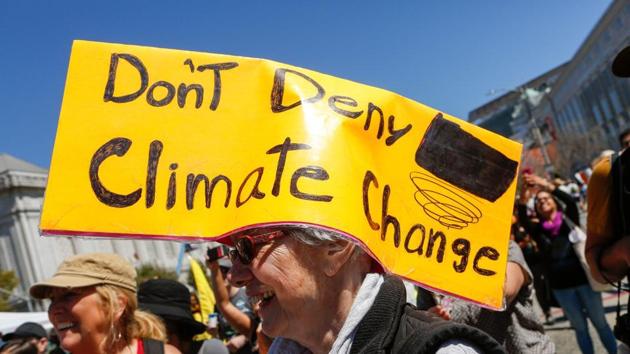Why there’s a need to keep global warming within 1.5 degrees Celsius
Since 1970s, most land regions have been warming up faster than the global average, which has led to a fifth of the world’s population experiencing warming greater than 1.5°C above the pre-industrial levels.
The average annual temperature on Earth has gone up by 1°Celsius as compared to levels before the industrial age (1850 -1900). The Intergovernmental Panel on Climate Change report looks at the consequences of the temperature jumping to 1.5°C and 2°C above the pre-industrial era levels.

The importance of the 1.5°C limit
An average warming of 1.5°C increases the risk of heat waves, heavy rainfall, extreme weather conditions, water shortage, reduced farm output, coral bleaching and sea level rise.
In 2015, under the Paris Agreement, 195 countries agreed to keep the global average temperature “well below” the 2°C level and make efforts to limit warming to under 1.5°C.
A warming of 2°C will lead to a substantial increase in risks; particularly in developing nations and island countries in the tropics that have limited capacity to adapt.
How close are we to the 1.5°C limit?
Pollution from human activities have raised the global average temperature to 1°C above the pre-industrial levels. Currently, there is a 0.2°C increase every decade. If current trends continue, the world would reach the 1.5°C limit by around 2040.
Since 1970s, most land regions have been warming up faster than the global average, which has led to a fifth of the world’s population experiencing warming greater than 1.5°C above the pre-industrial levels.
Can we stop the temperature from rising above 1.5°C?
Even if all countries meet the Paris Agreement goals, emissions would still not reduce quickly enough to limit the global average temperature warming to less than 1.5°C.
What can be done?
Strong international cooperation along with a scaling up of efforts to reduce emissions rapidly in the coming decade is needed to hold the temperatures at 1.5°C.
There is a need to shift to low- or zero-emission power generation, changing food systems such as moving away from land-intensive animal products, electrifying transport, developing ‘green infrastructure’, and improving energy efficiency by smart urban planning.
Source: Intergovernmental Panel on Climate Change






